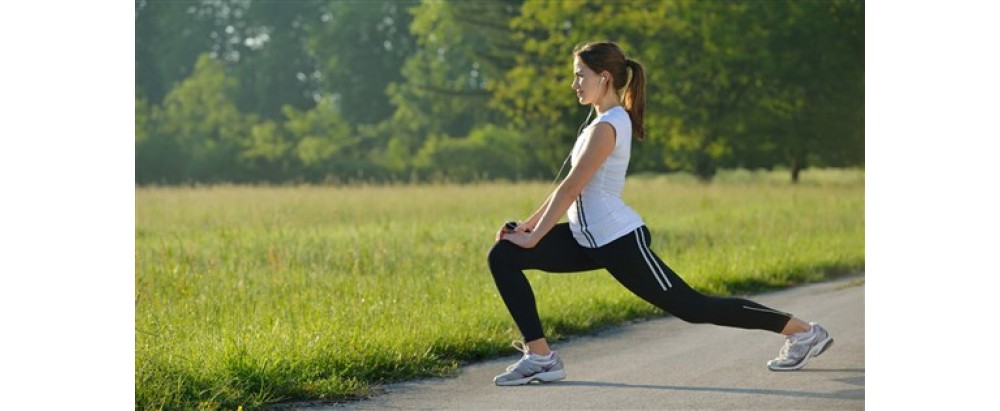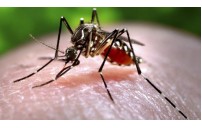- Healthcare Medical Devices₹1,195 ₹1,205₹210 ₹849₹3,499 ₹6,800
- Patient & Elderly Care
- Diabetes Care
- Body Care & Fitness
- Baby & Mother Care
- Clinical & Hospital Products
- Surgical Supplies
5 Exercises to Lower the Risk of Age-Related Diseases
2019-04-16 10:42:34
0
By: Holly Clark
Times Read: 4205

5 Exercises to Lower the Risk of Age-Related Diseases
Aging-associated diseases often tend to increase with biological agingwhich is the gradual deterioration of functional characteristics. There is aclear difference between age-related illnesses and the process of aging itself.Examples of age-related diseases are cancer, arthritis, cataracts, type 2diabetes, cardiovascular disease and hypertension.
One of the most worrying age related diseaseis dementia, unfortunately it has become an epidemic. “Dementia is now thebiggest cause of death amongst women in many countries, and millions of peoplelive with it every day. However, treatments are improving, and early diagnosisis key” according to FirstCare boss Jane Byrne.
Although some age-related diseases are inevitable, these exercises canhelp you to lower the risk of these illnesses:
1. Swimming
It builds endurance and strength of your muscles as well ascardiovascular fitness. When you are swimming, the buoyancy of the watersupports your body and this helps to take the strain off your painful joints aswell as move on more freely since it alleviates stress and also helps to keepyour heart rate up. It also provides an all body workout because all your bodymuscles are used when swimming. Toning muscles and building strength are alsoother reasons why swimming is significant in helping reduce risk of age-relateddisease and it also helps in maintaining a healthy heart and healthy lungs.People with lower back pain should consider swimming since it won't strain orjolt your back.
2. Aerobic Exercises
These include activities such as Walking, elliptical training machinesand dancing. Walking helps in lowering the risk of age-related diseases invarious ways. It increases muscle strength and endurance as well as reducesbody fat. It also helps you to have stronger bones and improved balance isanother benefit of walking. It also helps to relieve stiffness and muscularpain.
3. Strength Training Exercises
These exercises will not always bulk up your muscles but they willkeep them strong. For example exercises that involve major muscles in the bodysuch as biceps, chest, legs, core and shoulders. They help an individual tomaintain balance, weight control, have joint flexibility and have strongerbones. Improving glucose control significantly and help a person sleep betteris another benefit. The exercises help in reducing the symptoms of back pain,depression and diabetes.
4. Flexibility Exercises
These exercises help to keepyour muscles working well. Avoid stretching exercises that strain your spine and to seek adoctor's advice on which exercises are advisable and suitable for you.Stretching exercises have benefits such as relieving low back pain andarthritis. They also help to improve posture and increase the flow of blood inthe body as well as energy levels. Stretching also reduces the risk of fallingsince it improves balance and stability which is a high risk, especially amongolder adults.
5. Balance and Stability Exercises
As indicated above, stretching helps in improving balance andstability but there are also other exercises which help in maintaining balanceand improving the stability of a person such as yoga, walking heel to heel, andusing a balance board or a stability ball. For example, falling is a commonoccurrence among people who have osteoporosis. Fall prevention is crucial andthese exercises help in preventing that and these exercises help a person tofalling and breaking their bones or other injuries.
Related Posts
Natural Remedies To Cure Diabetes At Home
12/11/2016
1
Key Facts About Chikungunya (चिकनगुनिया)
08/11/2016
0
Comments
Write Comment
Recent Blog Posts
The Importance of Natural Healing Remedies for Wellness
18/04/2025
0
Modern medicine dominates healthcare, but natural healing remedies experience a rising popularity in our current era. People today have reestablished their connection with proven ancient methods demonstrating how the human body can heal itself. The h...
In-Home Care Tips: Incorporating Healthcare Products for Senior Wellbeing
27/10/2024
0
As our loved ones age, maintaining their health and well-being becomes increasingly important, particularly for those who wish to age in place. In-home care for seniors offers an opportunity to provide personalized care in the comfort of their own ho...
How to Take Care of Braces: 6 Helpful Tips for You and Your Kids
09/09/2024
0
Getting braces can be a daunting experience for a child. Having to undergo a major long-term process may bring up a lot of questions in your mind as well as theirs. But you as a parent can help your child who is undergoing dental braces treatment by ...
Orthodontic Solutions for Everyday Dental Problems
15/08/2024
0
Orthodontic treatment is more than just achieving a radiant and beautiful smile. It addresses a variety of dental issues that can impact overall health and well-being. If you're experiencing dental problems, orthodontics might be the solution you're ...
8 Benefits of Exercising: Why Being Physically Active Important?
25/07/2024
0
8 Benefits of Regular Exercising: Everyone has heard that leading an active lifestyle is the key to being healthy. But what benefit may exercise provide? Do you struggle to control your weight? Begin exercising on a regular basis. Need more energy or...
It’s an Eye-emergency: How to Flush Out Your Eyes Safely
14/05/2024
0
You might be having a great day, relaxed and peaceful. But that peace is shattered when something goes into one or both of your eyes. Your eyes sting, and you feel the urge to rub them! But you know you shouldn’t! It could be a splash of some liqui...
Navigating Pregnancy: 8 Simple Tips for a Healthy Journey
27/03/2024
0
Navigating Pregnancy: 8 Simple Tips for a Healthy Journey - So, the test says you're going to have a baby, and it's okay to feel all kinds of things right now. First off, congratulations! Being pregnant is a big deal, and it's normal to have a mix of...
The Importance of Prediabetes Screening
09/02/2024
0
Prediabetes is a critical phase that comes before type 2 diabetes – It’s when your blood sugar levels are higher than normal but not yet high enough to be classed as diabetes. It also offers a valuable warning and a window of opportunity for y...






















